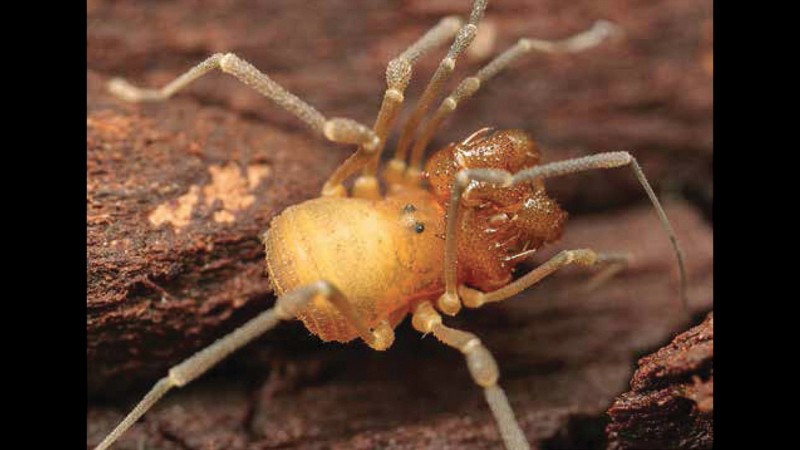If you read the stories recently about the new “monster” daddy longlegs species discovered in the forests of southwestern Oregon, you probably won’t want to take a hike there anytime soon.
But for those brave enough to risk it… bring your microscope.
In research published in the peer-reviewed journal ZooKeys, scientists described the new species — the Cryptomaster behemoth — as a “monster” in relation to another species in the same suborder.
Just how big is it? A little more than 5 mm long. Yeah, that’s millimeters.
But the Internet freaked out at the mere mention of a “monster spider,” with people declaring their plans to move to the Beaver State canceled.
Scientists were excited, though, about the discovery of the new species in Oregon’s mountainous regions — spanning from the Coast Range to the western Cascade Mountains. They said it “highlights the importance of short-range endemic arachnids for understanding biodiversity” and “further reveals mountainous southern Oregon as a hotspot for endemic animal species.”
OK.
Cryptomasters are short-legged harvestmen — a type of arthropod that eats other arthropods — with large hanging appendages. Like spiders and scorpions, they are arachnids or joint-legged arthropods.
They may be frightening to look at, but this species is harmless to people, researchers told CNN. Cryptomasters live under woody debris, waiting to capture their prey. That’s how these arachnids got their name — from their ability to stay hidden.
Biology professor Marshal Hedin from San Diego State University received a grant from the National Science Foundation to study the Cryptomaster behemoth. But it’s just one part of a larger group Hedin and his team are studying.
“This part is about discovering diversity and describing it,” Hedin told CNN.
The hunt for these “rare” arachnids spanned several states in the Pacific Northwest. Hedin and four other researchers drove around California, Oregon and Washington during the summer of 2014 to see if they could track down other types of Cryptomasters.
But the discovery of the Cryptomaster behemoth was set in motion decades ago.
Scientists first came across the new “monster” arachnid’s cousin, Cryptomaster leviathan, in 1969 in Gold Beach, Oregon.
By comparing DNA strands in this study, lead researcher James Starrett said his team was able to discern the genetic differences between the leviathan and the behemoth.
“If you were to hold the two in your hand, you might not be able to tell them apart,” Starrett said.
This could be the start of more species discoveries in the region. Researchers believe there are more species of arachnids that have yet to be recognized.
“You don’t have to go somewhere exotic, like the Amazon, to find something that hasn’t been discovered,” Starrett said. “With these tools, you can find something not discovered right here in the Northwest.”
